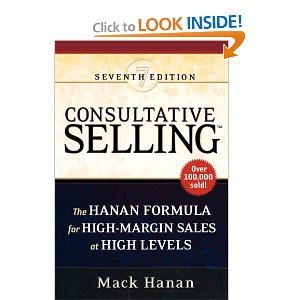(This article is Part 2 of my series on Framing Your Messages for maximum effect)
A popular song tells us we should “accentuate the positive” and eliminate the negative. Intuitively, it just feels right, and many writers on persuasive communication share this view. (See The Language of Trust and this article)
However, there is a psychologist at Princeton University who would beg to differ. His name is Daniel Kahneman, and in 2002 he was the first non-economist to win the Nobel Prize in Economics, partly for his work called prospect theory, which examines the different ways in which people respond to negative and positive frames.
To illustrate, consider the following choices from one of his experiments:
Your plant, which employs 600 people, is losing money, and you have to recommend a course of action to the board:
A) You can scale back production in the most unprofitable lines and keep the plant open. This choice means that 400 jobs will be lost.
B) You can invest in new equipment to try to salvage the unprofitable lines. This choice means there is a 1/3 chance that no jobs will be lost, and a 2/3 chance that all 600 will be lost.
Which course would you choose? (Please answer before proceeding) If you chose B, you were in the clear majority. (72%)
Now consider these options with a different frame:
C) You can scale back production in the most unprofitable lines and keep the plant open. This choice means that 200 jobs will be saved.
D) You can invest in new equipment to try to salvage the unprofitable lines. This choice means there is a 1/3 chance that all jobs will be saved, and a 2/3 chance that none of 600 will be saved.
In this case, a large majority chose C. (78%) Look at it this way: roughly ¾ of respondents chose the riskier path to avoid a loss, but only ¼ chose the riskier path to reach for the possible prize of saving all the jobs.
You probably weren’t fooled, because you saw both frames, and realize that option C is exactly the same as A. Let’s take a closer look at the options to see what’s going on. In the first set of choices, the sure loss of 400 jobs was emphasized, so most subjects chose the riskier choice, which is to invest in new equipment. It’s riskier because there is more uncertainty surrounding the result. In the second set of choices, the first course was framed as a sure saving of 200 jobs, and suddenly the riskier choice was not so attractive.
You have to reverse the risk
This example demonstrates that a choice that is framed as the avoidance of loss is more likely to spur action than one that is portrayed positively. In getting people to move from Point A to Point B, the from has to come first. If a key goal of your persuasive efforts is to get listeners to take action, as you can see from the example above, begin by stressing the negative consequences of inaction.
Choices about future behavior always entail risk, which is one reason so many people cling to the status quo with the tenacity of a barnacle. Good persuaders try to minimize the risk or their listeners’ perception of that risk; great persuaders reverse the risk. It’s nearly impossible to pull two strong magnets apart, but see what happens when you reverse the polarity of one of them.
Franklin Roosevelt exploited this idea masterfully when he gave a speech to the nation on December 29, 1940. His goal was to persuade a skeptical and complacent nation that the US had to take sides in the war then going on in Europe, in which at that time only Great Britain and Greece were still holding out against Axis domination. FDR clearly saw the threat that Nazi Germany posed to the US, but the nation did not. To take sides would mean huge expenditures to gear up industry to produce weapons and to risk angering Nazi Germany which was then steamrollering over almost every opponent.
In his speech, which lasted over 30 minutes, FDR spoke for about the first twenty minutes about the grave risks of inaction. He explained how the Atlantic was not so wide given the latest military technology; he described the nature of the enemy, “It is an unholy alliance of power and pelf to dominate and to enslave the human race.” He countered the opposing argument that the US had to seek accommodation with the dictatorships: “They call it a “negotiated peace.” Nonsense! Is it a negotiated peace if a gang of outlaws surrounds your community and on threat of extermination makes you pay tribute to save your own skins? For such a dictated peace would be no peace at all.”
After painting the alternative in the bleakest possible terms, he was ready to go for the close. “Let not the defeatists tell us that it is too late. It will never be earlier. Tomorrow will be later than today.” And the rest, as they say, is history.
How does this work in the real world?
Of course, experiments conducted on Princeton undergraduates don’t necessarily translate to real life, and it’s not likely that anyone reading this will ever be President, so let’s see how this idea actually works for the rest of us.
In sales: Solution selling is a dominant paradigm in selling today, and its very name implies that the customer must have a problem to be solved before they will buy. With solution selling, you have to sell the problems first. Salespeople know how to ask the right questions to get the customer talking about their problems to move them from indifference. Uncovering a problem is not enough in many cases, though; the next step is to get them to articulate the pain of the problem by bringing to light the costs and impacts of the situation.
In business leadership: Getting people to change can be extremely difficult. John Kotter’s Eight Steps of change management begin with creating a sense of urgency, which is generally done by exposing or creating a potential crisis. It’s the best way to get attention and make people uncomfortable with the status quo.
In speeches: Martin Luther King is rightly remembered for his compelling vision and mesmerizing words when he told us he had a dream. But most people don’t remember that earlier in that same speech he said:
“It would be fatal for the nation to overlook the urgency of the moment. This sweltering summer of the Negro’s legitimate discontent will not pass until there is an invigorating autumn of freedom and equality. Nineteen sixty-three is not an end, but a beginning. And those who hope that the Negro needed to blow off steam and will now be content will have a rude awakening if the nation returns to business as usual. And there will be neither rest nor tranquility in America until the Negro is granted his citizenship rights. The whirlwinds of revolt will continue to shake the foundations of our nation until the bright day of justice emerges.”
So you’ve scared them—then what?
Here’s the problem with all this, though: if you scare your audience and don’t show them a way out of their problem, you haven’t done them or yourself any good. In fact, some studies have shown that scaring people without giving them confidence that they can do something about the situation will lead to paralysis.[i] For example, telling someone that smoking will kill them and showing gruesome pictures of diseased lungs without showing them how it is possible to quit is worse than not scaring them at all.
For the negative appeal to work, you must give your listener a sense of efficacy—a sense that your proposed course of action will solve the problem and that they are capable of doing it. This is where the positive part comes in.
Close on a positive note
Yes, there definitely is a time to accentuate the positive: at the end. The negative framing will put your listeners’ vehicle into drive, and now you must steer them in the right direction. Dr. King definitely closed on a positive and inspirational note, and that is what people remember and that is why his speech was so memorable. You also have the power to show them a better way.
[i] Persuasion, Social Influence and Compliance Gaining, Robert H. Gass, John S. Seiter, p.285-287.






